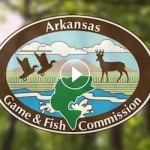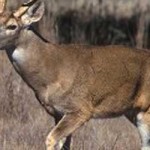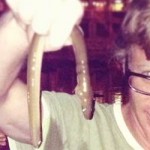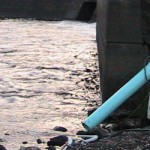Courtesy Arkansas Game and Fish Commission
LITTLE ROCK – Hunters and wildlife watchers are urged to help count and identify Arkansas’s wintering swan populations.
Karen Rowe, nongame migratory bird program leader with the Arkansas Game and Fish Commission, said, “Numbers of both trumpeter and tundra swans wintering in Arkansas appear to be on the increase. Some of these swans are wearing neck collars that can tell us the state of origin of the swan.” We need the public’s assistance in not only reporting the location of the swans; more importantly, we need their assistance in noting the collar color and reading the alpha numeric code on the collars.”
Some of the swans wearing collars are those released as a part of the Mississippi Flyway Council’s reverse migration experiment. This experiment attempts to re-establish historic swan migrations south into Arkansas and other Southern states from the swans breeding areas in Northern states.
Trumpeter swans are the largest birds native to North America. Adult males measure 57 to 64 inches long and weigh about 25 pounds. Adult females range from 55 to 60 inches and weigh about 20 pounds. Their wingspans can approach 8 feet, and they fly with their extremely long necks outstretched.
About 5,000 trumpeter swans live in the Midwest, most of them in Minnesota, Wisconsin, Iowa and Michigan. They generally migrate in family groups and prefer to feed on aquatic vegetation. Little is known regarding the numbers and groupings of southward migrant swans, so the location and characteristics of the sites they frequent and the duration of use is important to both the Trumpeter Swan Society and AGFC.
“By providing information and collar data on swans in Arkansas, observers can help document the changing distribution of wintering trumpeter swans and help identify potential new and important swan wintering sites in our state,” Rowe said. “Binoculars or a spotting scope are often needed to read the neck collar identification code. Reports that contain the collar letter and number are extremely valuable because they enable us to track a particular swan, not just across Arkansas, but throughout its journey up and down the Mississippi Flyway. We really appreciate the observers’ efforts to obtain these important but difficult to read neck collar I.Ds,” Rowe explained.
Observers should note the exact location of trumpeter swans using a GPS when possible and if the birds are wearing collars, write down the number and letter code on the collar and send that information to Rowe at krowe@agfc.state.ar.us, or complete the survey at http://www.surveymonkey.com/s.aspx?sm=ONVLAfxzHa38N5bhYe_2bimQ_3d_3d. Because it can be difficult to tell the difference between tundra and trumpeter swans in the field, the public is encouraged to visit http://www.trumpeterswansociety.org/id.htm to learn the key differences in bill shape and other physical characteristics of these two species.












